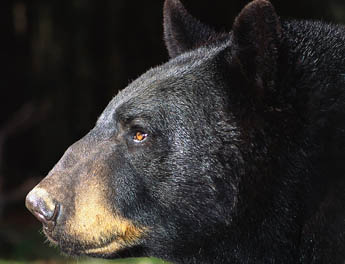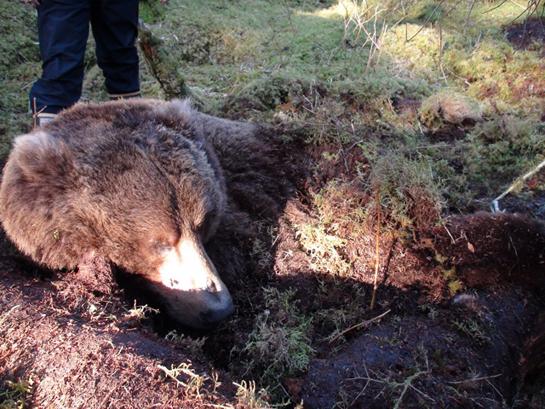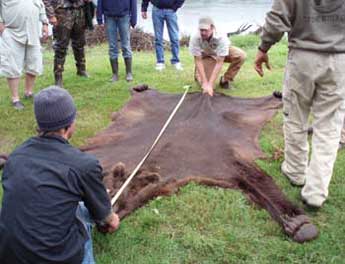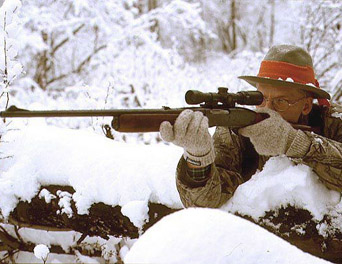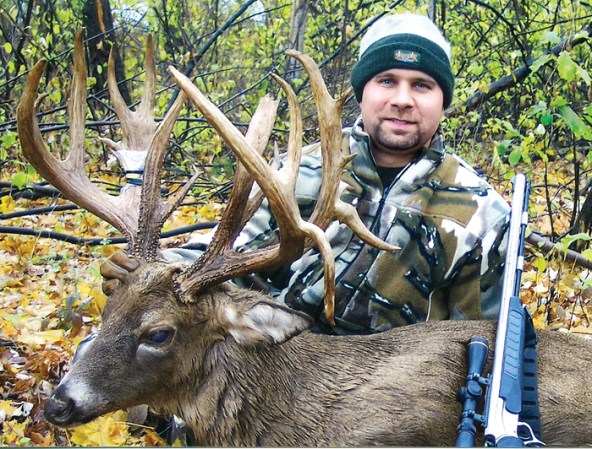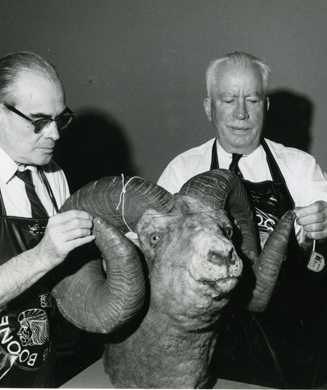A few miles from where this is being written, no less a hunter than Daniel Boone bagged a bear back in 1760. He commemorated the event by carving “D Boone cilled a bar …” on a beech tree near where he shot the animal. Boone no doubt “cilled” lots of “bars” during his wanderings in these parts, and it has always been something of a mystery as to why that particular event inspired him to whittle his famous declaration. Perhaps he was in a literary mood that day and felt the need to practice his writing skills, which, if true, would rank him as one of America’s very earliest outdoor writers.
It has been suggested by nonbelievers that the carving was a hoax committed by an unknown tree forger. But around here it’s not safe to say that, because generations of local families have been brought up with the fervent conviction that the inscription was made by none other than Boone’s own hand and hunting knife.
So intrinsic is Daniel Boone’s legacy to these people that a community near the site of the bear’s demise has adopted the name of a waterfall behind which Boone is said to have hidden from Indians. The settlement now includes such modern conveniences as its very own traffic light–it even has a legal liquor store. But that’s getting away from my story about Dan’l and his bar tree.
Sometime about a century ago, the remains of Boone’s beech tree were lumbered. The wood was used to furnish the main courtroom in the town of Jonesboro, which is known, among other things, for being the oldest town in Tennessee and a historic gathering place for politicians and other riffraff.
For a number of years I did my scribbling in a downtown office directly across the street from the courthouse, which some readers may recall as the scene of “The Great Jonesboro Pigeon Shoot,” reprinted in these pages a few years back.
Principal among the items that were manufactured from the Boone tree were gavels, employed over time by a succession of judges to pound respect for the law into the thieves, swindlers, bootleggers, moonshiners and assorted scofflaws and scoundrels that the hills and hollows of Eastern Tennessee provide in unending quantity.
One of the most worthy and respected of these judges was one I’ll refer to here only as Judge Andrew. So possessed was he of judicial bearing that lawyers quaked in his presence and criminals became fonts of confessed guilt. So esteemed was he that he won every election to the bench by a landslide. Interestingly, when not presiding over his court, he was the very model of discretion and congenial gentleness.
To those of us who knew and respected him, Judge Andrew had only a single fault–he was a turkey hunter. Not just your everyday, mad-as-a-hatter variety of turkey hunter, but a man possessed beyond reason. During recesses in his court, he would dash across the street to my office, his judicial robes streaming behind like a wind sock, a gavel carved from the Boone beech tree (the story of which I’ll get to presently) still in hand.
Together we discussed breaking news on the turkey-hunting fronts, developed handloads for his 10-gauge magnum and experimented with the latest developments in turkey-hunting gadgetry. No new turkey call or technique escaped his investigation, and he demonstrated most of them in the echoing confines of my office until my ears rang and nerves jangled.
When turkey season rolled around, Judge Andrew was invariably in the woods from before dawn until the last moment that would allow him time to race to the courthouse, dash into chambers and don his judicial robes just as the bailiff intoned the traditional, “Oeyazz, Oeyazz, court is now in session, Honorable Judge Andrew presiding, all rise.” On which cue the judge would appear at the bench, a model of professional bearing, and bang the day’s proceedings to order with the gavel made from Daniel Boone’s beech tree. And then one day it happened.
I wasn’t there to see it, but according to accounts from dozens of eyewitnesses (the courtroom was jam-packed, due to a locally sensational case involving a minister charged with indecent exposure), the bailiff was just getting to the “all rise” part of his announcement when his mouth dropped open and his eyes blossomed in utter disbelief. Likewise, the throng of lawyers, reporters and onlookers stood for a moment in shocked silence and then, one by one, twitters arose, followed by a chorus of guffaws.
Perplexed by such a show of disrespect in his court, Judge Andrew signaled the bailiff for an explanation, and after a whispered exchange, he, too, joined in the laughter.
Rather than concealing his face with a camouflage head net as he usually did, Judge Andrew had, that morning, opted to experiment with a palette of camouflage face paint, something he had completely forgotten about in his dash to the bench. Thus, when he appeared in his courtroom, what was seen above the somber robes of justice was a face streaked and daubed with colors like that of a Comanche brave on the warpath.
I know this is all exactly as it happened because Judge Andrew told me so himself during a court recess that very morning. And I know he spoke the truth because his face was still a spectrum of greens and browns. After all, he was going back to the turkey woods that afternoon, so why scrub off a perfectly good camo job?
And that’s the story of Daniel Boone’s bar and the beech tree.
GREAT RIFLES Under $500 • outdoorlife.com/march07
 Inaddition to providing lumber to furnish the Jonesboro, Tenn., courthouse, theBoone tree (inset) was used to make a gavel for the local judge and a lovelystock for this Tennessee long rifle.


